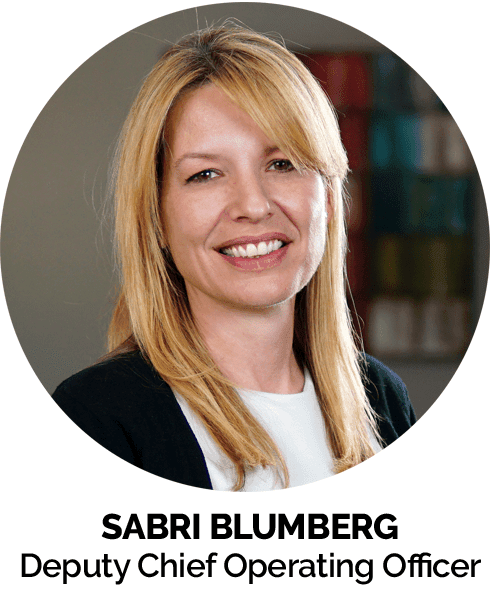Last updated on September 23rd, 2024 at 09:31 pm
This week’s blog post comes from the Ask Sabri column in our magazine, with a reader question that is relevant to many dental practices right now:
Q: Help! We can’t find any good employees. We’ve been trying to hire, but people either are asking for too much money, don’t last long, or never find their footing on the job. What do we need to do?
A: I understand the struggle! We are still going through an interesting time with regards to the labor market, and it’s harder to find and keep people than it used to be.
But that doesn’t mean it can’t be done! It is definitely still possible to add great talent to your team; you just need to be extra sharp with hiring and managing team members.
This may be a bit of an oversimplification, but if you’re having trouble with adding new team members, it ultimately boils down to four possible problems:
- You’re not finding the right people.
- You’re holding on to the wrong people too long.
- Your office culture and/or reputation need improving.
- Your onboarding and training processes need work.
Let’s take them one at a time.
1. Finding the right people.
There is no way to absolutely guarantee you have found the right person before you hire them. The only way to tell for sure is to get them on the job and see how they do. (Which relates to point #2 below.)
However, there are a few things you can look for during the interview process to stack the deck in your favor as much as possible:
Trainability
The number one thing I’m looking for is someone who is trainable. This means someone who wants to learn and grow and take on more responsibility. As a word of warning here: their education background or degree is not an indication of how trainable they are. I’d much rather have a high-school dropout that is sharp and can translate training into action than someone who managed to get their degree by memorizing information by rote.
Explain the job to them and get a feel for if they can retain the information and begin thinking about how to use it—not just parrot the information back to you.
Read more on training your team: 4 Tips for Building a Reliable Dental Team You Can Count On
Coming up with their own ideas
I want someone who is genuinely interested in the job and will take initiative—not just robotically do the bare minimum of work that’s assigned to them.
A good indicator for this is if they start coming up with ideas and trying to figure out how they can help improve things.
things.
During the interview, discuss the various aspects of the job with them and how things are done in your office. Make it a conversation. Do they just listen quietly, or can you see the gears turning in their head? Do they say something along the lines of, “Oh that’s interesting! What if we also did this? We might be able to reach more patients that way.”
This is different than someone who “knows best” saying, “Well, we did it this other way at my old office…” or, “That’s stupid, you shouldn’t do it that way…”
I’m not looking for criticism here. I’m looking for positive contribution and creativity.
Now, I don’t necessarily expect these to be good ideas that you’ll implement immediately. After all, they’re new to the practice, so they don’t know all the ins and outs yet. The point is that they are thinking of how they can contribute through their role.
Communication ability
Almost all jobs in a dental office are highly dependent on communication ability—with the possible exception of insurance billing.
So I’m always paying close attention to how well they communicate. This doesn’t mean they need to be bubbly and loud, and it also doesn’t mean that they should overwhelm you by talking your ear off nonstop.
I want to know if they listen, if they understand you, communicate clearly, and keep the flow of conversation without being too withdrawn or hesitant.
The interview process
We already have a wealth of content about creating hiring ads, finding prospects, and conducting the interview process—so I won’t rehash all that here.
Click here to see more content on hiring and interviewing.
The one thing I will say is that you may need to interview 20+ candidates before you find the right one.
Look, I know that doing a bazillion interviews is time-consuming and tedious—and I’m sure it’s not how you want to be spending your time. But it is what it is. Sometimes it takes a lot of work to find the right person for your practice, and you’re much better off putting that work in now to get it right. There will be much more wasted time and headaches when you have a bad fit and then need to replace them.
2. Letting people go when it’s a bad fit.
I already mentioned that you don’t really know if someone is the right fit until you put them on the job.
Hiring the wrong person is a forgivable mistake and it’s bound to happen. No big deal.
The bigger mistake is keeping someone that you know (or should know, if you were being honest with yourself) is not going to be successful on the job at the standard you want.
 When someone is underproducing or making mistakes, I’m going to make sure I give them good training and correct them. If they are still making mistakes, I’ll have a conversation with them, find out what they need help with, and do more training and correction.
When someone is underproducing or making mistakes, I’m going to make sure I give them good training and correct them. If they are still making mistakes, I’ll have a conversation with them, find out what they need help with, and do more training and correction.
Should this keep happening—if they’re not performing or are repetitively making the same mistakes despite correction—then they’re just not a good fit for that position.
Keeping them on the job in that scenario is doing a disservice to them, to yourself, and to the rest of your team. It may seem like you’re being nice by keeping them, but I guarantee you they know they aren’t doing a good job and aren’t happy. Give them the opportunity to find a job where they can succeed—even if it’s not in your office.
And believe me, you’re not saving any work for yourself by keeping them. You’re much better off hiring and training a new person.
Especially if they are having a negative impact on the morale and culture of the group—this needs to be sorted out immediately. Having someone that brings down the whole team or creates conflict has a massive effect on the practice as a whole. I can’t tell you how many times I’ve seen it where the bad apple leaves, and then the rest of the team can finally come together and truly work as a group—and then practice production goes way up even before hiring their replacement.
And this leads me right in point #3…
3. Providing an environment and culture that people want to be a part of.
If your staff are always telling their family and friends how much they love working here and patients are always saying things like, “Wow! Your staff are so great! I always love coming here”—that’s going to make hiring much easier. Word will spread and people will see it when they come to your office. You’ll start finding people who actually want to be part of the group—not just take a random job for the paycheck.
As I mentioned in point #2, keeping the wrong person can be a big drain on morale. Even if they are not disruptive or “toxic,” it can still breed resentment. The other staff get tired of picking up the slack for them. Or worse, they see that apparently, it’s okay to do a poor job or be lazy because you tolerate just fine from the other employee.
Beyond that, culture starts at the top. As the practice owner, you set the tone. You are the example for all the employees.
So, be honest with yourself about your own behavior. Do you practice what you preach? Do you snap at employees impatiently? Do you acknowledge the positives or just focus on the negatives? Do you bring positive energy and enjoy yourself at the office?
Also take a look at what type of environment you are providing for the team. Do they feel safe communicating and making suggestions? Are they rewarded for good work? Is there a goal they’re working toward and a bonus plan? Is there opportunity for growth and promotions? Do you focus on the purpose of the practice—to help people improve their health—and ensure your staff see how they’re making a difference in people’s lives?
This is all tremendously important for attracting great people and especially for retaining them long-term.
4. Providing structured training.
It seems simple to just have your new hire shadow another employee for a few days, but it’s important to provide more structured training.
 The training should be done on a gradient. It’s better to start too small than to start too big. Don’t throw them in the deep end too quickly.
The training should be done on a gradient. It’s better to start too small than to start too big. Don’t throw them in the deep end too quickly.
And you may have to teach them more basic things than you would expect. The things people learn in school today aren’t necessarily the same things you learned. This doesn’t mean they’re dumb or incompetent, just that things have changed. Younger people nowadays may not be familiar with writing a formal letter, sending mail, or writing a check. That’s fine. Just teach them!
All of these training steps should be done:
Learn basic dental terminology.
This may be as simple as giving them a list of dental terms (and any other specialized words or abbreviations they’ll be encountering) with definitions and some images or videos. This way they won’t get lost in the words and misunderstand what you’re telling them to do later on.
Even if they have prior experience in a dental office, they should at least review this terminology because you’d be surprised what people don’t actually understand even after working in dentistry for years.
Learn the policies, protocols, and job duties relevant to their job.
The new hire needs to know what they will be doing, how they should do it, and what is expected of them as a team member in your practice.
Ideally, this should all written down in a manual (or recorded as a video) so you know they’ve seen all of it and you have something to refer to if there is any confusion later on. You don’t want a situation of “No, Suzy told me to do it this way…” and nobody really knows.
These training materials should cover every aspect of the job, as well as any policies that are relevant to all employees.
If you want better training materials—I highly recommend signing up for DDS Success. It’s an online team training platform that gives detailed step-by-step job training and efficient front office systems. It doesn’t do all the work of training a new hire, but it makes it a lot easier and also provides a way for experienced staff to keep learning and improving. Schedule a free demo here.
Do an “apprenticeship” with an experienced team member.
Here is where you can have them shadow another team member. They should:
- Watch the experienced team member do a job function.
- Clarify any questions they have about it (referring to the training materials, as relevant).
- Practice doing it in a role-playing scenario with an experienced team member.
- Start doing it on the job under a supervisor until they are both confident in their ability to do it alone.
I would run each primary job function through these four steps one at a time. Don’t throw the whole job at them at once. Once they’re competent at the first function, move on to the next one until eventually they’ve taken over every part of the job. If you dedicate some time to it each day, then it should only take 1-2 weeks to get fully settled for most jobs.
Summary
This is by no means a complete explanation of hiring or training, but if you take these points to heart, I think it will help!
Don’t ever forget that the biggest mistake in hiring people isn’t hiring the wrong person, it’s keeping the wrong person too long. If they’re not a good fit, let them go, and don’t be afraid to keep hiring new people to find the gems that will make your team great long-term.
And if you’re serious about building a well-organized practice with an efficient, productive team, schedule a free consultation here to learn more about the MGE Power Program.




No Comments
Be the first to start a conversation